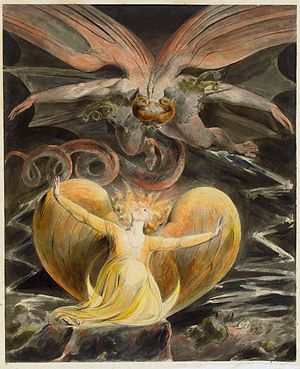
Professor Bruce J. Malina, a leading scholar in the Context Group, has written a book on the genre and message of the book of Revelation in which he interprets it as an astral prophecy. This is from the dust jacket blurb of On The Genre And Message Of Revelation: Star Visions and Sky Journeys (1995):
As one of the pioneers of applying social criticism to the biblical text, author Bruce Malina has helped revolutionize the way we think about the text and our models for interpretation. Now in a compelling new study—and one that will surely be his most controversial—Malina offers a completely new lens for viewing the book of Revelation. Malina contends that John the Seer’s milieu was one of intense interest and fascination with the sky, especially with those “beings” in the sky—constellations, planets, comets, sun, moon, and zodiac—that controlled the destiny of the Earth and its inhabitants. He asserts that John has his own interpretation of the sky that follows not the Greco-Roman astrological myths but the Jewish and Christian story of God’s salvation in Messiah. John thus stands as an “astral prophet” who interprets the sky in accordance with what has taken place in Christ. This vibrant reading of Revelation is buttressed by innumerable ancient literary and archeological sources that demonstrate that John’s world was indeed one enamored with the sky and its significance for planet Earth.
According to Revelation 4:1, John the Seer looks in the sky and observes an “open door.” Then the “first voice” invites John “up” to the heavens to witness what must take place. “In the spirit,” John describes what he sees in the sky. Is John really looking at the sky? . . . . . . Is John the Seer’s language of special numbers, brilliant colors, heavenly thrones, elders, angels, sun, moon, and stars more in keeping with descriptions of the sky than with apocalyptic visions? Bruce Malina thinks so, and he builds an unusually impressive case that will surely stir the interpretive waters surrounding John’s Apocalypse. On the Genre and Message of Revelation does what Bruce Malina has done so well for decades: he challenges Western readers to think like ancient Mediterraneans, to slough off biased, scientific presuppositions, and to explore the world of Jesus and his followers with a new map, one that leads to a richer understanding of the New Testament witness of Revelation.
Malina explains his view of the genre of Revelation: Continue reading “Born of a woman in heaven: cosmic origin of the Messiah”
